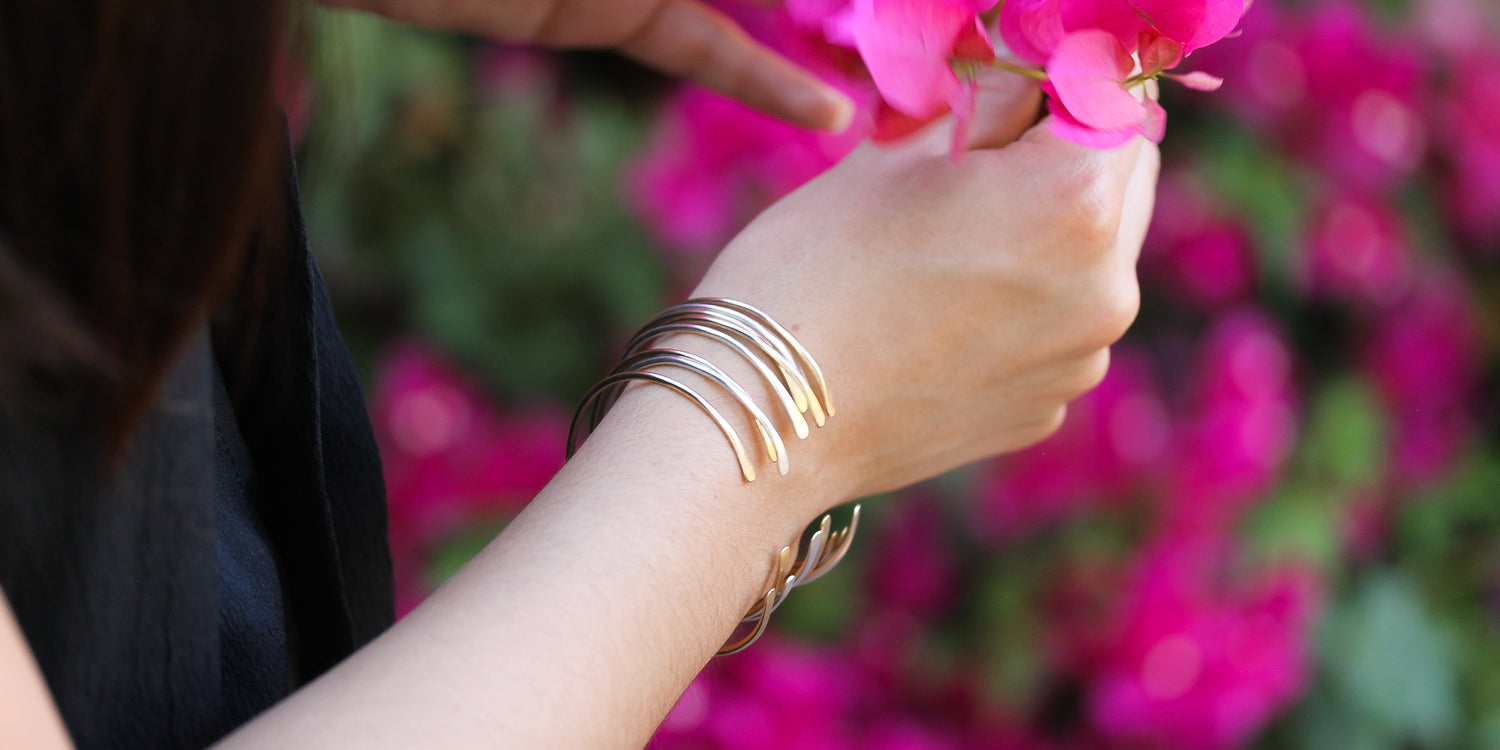I found this wonderful article all about gold filled from my major metals supplier and wanted to share it with you here in case you're filled (get it?) with technical questions, too. All of LSJ's gold filled jewelry is stamped G.F. to aid in identification and value retention.
xoxo, k.
Gold-filled materials are an excellent alternative to solid gold, offering gold's characteristic warm yellow or blushing rose tones at a fraction of the cost. At the same time, gold-filled is more durable and retains more value than gold-plated pieces. Incorporating gold-filled metals and gold-filled findings into your jewelry can differ from using solid gold; use this guide to familiarize yourself with gold-filled's properties, and you'll reap the benefits of this popular and economical metal.
Gold-Filled: What's in a Name?
Despite how it sounds, gold-filled metal is not actually filled with gold. "Gold-filled" is simply an age-old term that became accepted in the jewelry industry. Today, gold-filled is a quality designation that's regulated by the Federal Trade Commission. To merit a "GF" stamp, the material must have a layer of gold that is at least 10-karat mechanically applied to a base metal; the karat gold layer must also be at least 1/20 (5%) of the item's total weight. All of our gold-filled products have a 12-karat or a 14-karat gold layer and meet the federal quality standards established by the FTC.
How Gold-Filled is Made and Labeled
Gold-filled is made by heat- and pressure-bonding a thin layer of karat gold to a brass (or other base metal) core. The value of gold-filled is greater than gold-plated because gold-filled has an actual layer of karat gold, not just a microscopic film, as is the case with gold-plated items. The karat gold covering also significantly increases the tarnish resistance of the base metal substrate. Please note that gold-filled materials cannot be cast, and gold-filled casting grain does not exist.
The "14/20" or "12/20" notation refers to the industry shorthand describing the resulting material. The first number is the karat purity of the gold used; the second number is the amount, by weight, of gold to the substrate material. "14/20" gold-filled material is made with 14-karat gold, and the gold represents 1/20th (or 5%) of the total weight of the material. You may occasionally see other notations, too; each will inform you about the material's make-up.
Single-Clad vs. Double-Clad Sheet
Gold-filled sheet and discs are available in single-clad and double-clad varieties. In single-clad, a gold layer is bonded to one side of brass (or base metal) sheet. In double-clad, the bonded gold is distributed to both sides of the brass (or base metal) sheet. For most double-clad findings, gold-filled sheet stock is punched out or coined; the findings may need additional gold plating where the underlying base metal is exposed around the edges.
The weight of the gold relative to the substrate will be the same in both single-clad and double-clad. On the single-clad sheet, all of the gold is bonded to one side; on the double-clad sheet, the gold is distributed so that half is bonded to one side and half to the other side. That means the thickness of the gold layer on each side will be half what it would be on single clad sheet.
Read more at https://www.riogrande.com/article?name=GuideToGoldFilledMetals
Find our beautiful gold filled cuffs, gold filled earrings, gold filled hoops, and gold filled necklaces at lotusstonejewelry.com. <3



